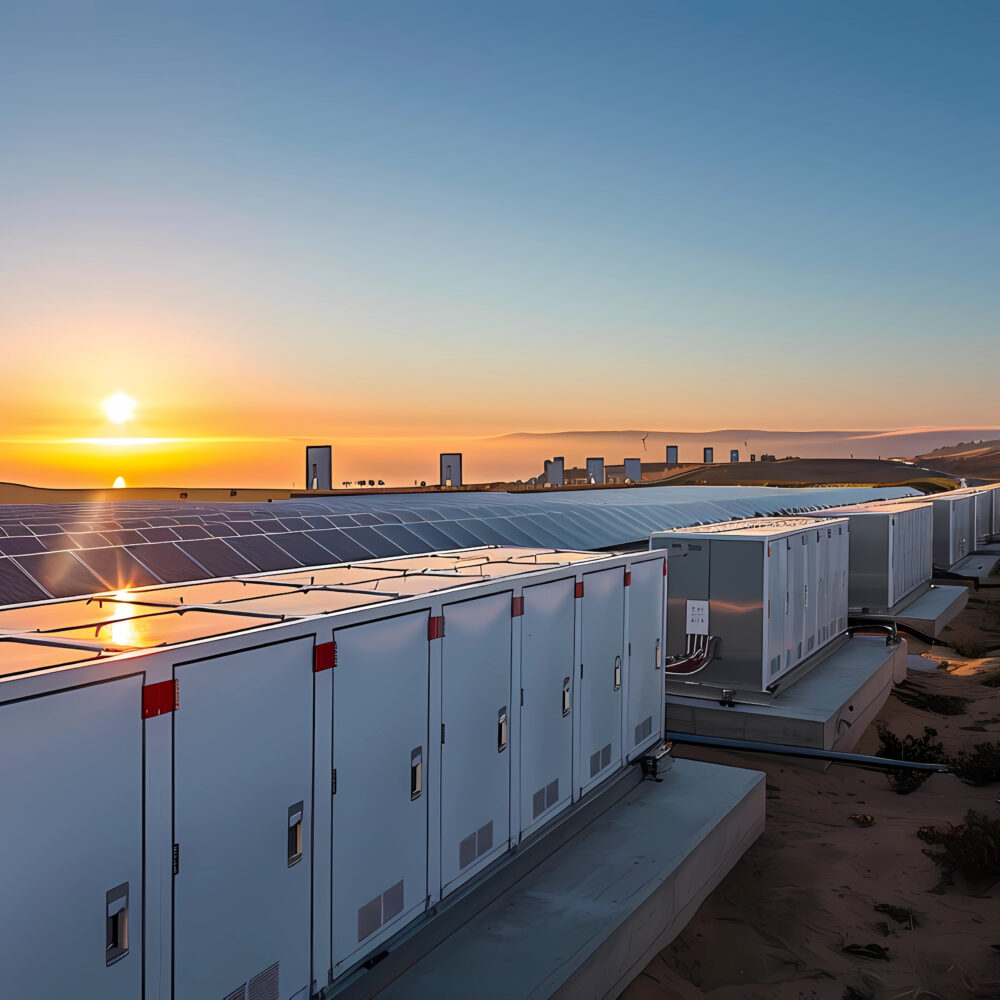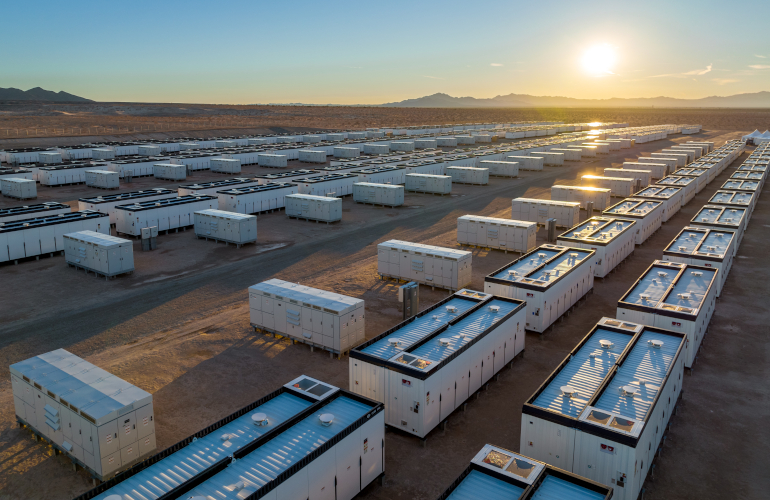Case Studies
2024 ERCOT Storage Performance Recap
What drove the best asset performance in a low revenue year?
2024 In-Review
2024 has already become somewhat infamous in the energy storage community. Overall revenue was down ~70% compared to 2023. This was predominantly driven by a reduction in Ancillary Services (AS) revenue opportunity, and fewer scarcity events.
We saw a large spread between top and median performing assets – and an even larger spread between median and low performing assets.
While on the surface these numbers may seem grim, we are fortunate that storage assets are a multi-decade investment. To own/operate a battery is to be long volatility and while 2024 may not have been as lucrative as many hoped, strategic operators were still able to make the most of these challenging market conditions.
-
144%
DA TB2 captured by top performersCompared to 66% by median performers
-
$88.96
per kWGenerated by top revenue generating assets compared to $34.87/kW for median assets
-
$0.32
per kW-cycleGenerated on average by the top 50 assets compared to $0.26 across the fleet
How were good outcomes achieved in this environment?
Across the fleet, battery storage assets made ~65% of all revenue in AS products.
- Assets that generate the most revenue (top 20) made 58% in AS and 42% in energy, with much of energy revenue concentrated in Real-Time (RT) energy.
- Top performing assets as defined by % of DA TB2 captured (top 20) made 68% in AS and 32% in energy.
Intuitively, this makes sense. Assets at nodes with more volatility had a higher revenue opportunity. In order to capitalize on the volatility they needed to reserve more capacity for RT energy. Thus, more of their revenue stack is attributed to RT. Assets at less volatile nodes need to strategically leverage every available product to maximize the opportunity available.
ERCOT Fleet Snapshot | 2024
Quarter-over-quarter breakdown
The revenue mix shifted substantially over the course of the year. Ancillary Service products consistently decreased in value, and energy arbitrage became a more significant piece of the revenue stack.
- Q1’24: Nearly all operators took AS-centric approaches, leveraging a variety of products. The majority of revenue (83%) came from AS, with RRS accounting for the largest portion.
- Q2’24: Top revenue generating assets focused primarily on ECRS, which was fairly new and benefitting from lower competition given not all batteries were registered to participate in it immediately. In fact, ECRS accounted for ~49% of the total revenue stack for the top 50 revenue generators in Q2. There was also a notable portion of revenue (~29%) from RT, largely attributable to the heatwave in May. Median assets spread themselves across all AS products.
- Q3’24: The shift to energy arbitrage as a primary revenue driver has begun. Top performing batteries made ~43% of revenue in DA and RT energy, with up AS products still adding value on top. With AS prices declining and a few interesting RT pricing events in August, it is becoming clear energy will be key to successful go-forward operations.
- Q4’24: The final quarter of the year was a lesson in strategy customization. Depending on where a project was located, and the daily conditions, different strategies were required. In aggregate, about half of the revenue of top performers came from RT energy. In contrast to earlier in the year – only 9% was from ECRS. November, in particular, had a handful of pricing events that contributed to this. If we go one click deeper, we see that assets that grossed the most revenue were largely at high volatility nodes, and made over half of their revenue in RT energy. Top performers still did well in RT energy, but did a much better job layering on AS products and leveraging DA energy to maximize performance.
As more storage assets came online and gained the ability to participate in Ancillary Services, AS transitioned from a primary revenue driver to a piece of a more diverse revenue stack.
There were also regulatory pushes driving this, including the enactments of NPRR1186 and NPRR1149 that introduced stricter state of charge monitoring and automatic clawbacks for assets unable to meet their AS obligations.
Overall, these data demonstrate that energy arbitrage has become the primary – but not the only revenue driver for energy storage assets. Optimal strategies have been able to balance in AS and DA energy, without taking themselves out of the market for RT energy price spikes. This all means that optimal strategies are much more nuanced and reliant on good forecasts and real time agility / balancing.
2024’s most lucrative days
It’s no secret that a handful of days in ERCOT make up a disproportionately high portion of overall revenue. Below are the days that top performing assets made the most money. We break them down in more detail – and showcase the evolution of winning operating strategies.
January 16, 2024
From hours 6-9, the majority of AS products experienced extended periods of high prices.
- Day-Ahead Energy: $1.5-2.2K from 7-9
- ECRS and Reserves: >$1K for ~4 hours from 6-9
- Reg Up, Reg Down and Non-Spin all crossed $1k threshold in one of those hours
2024’s top performing asset had its best day of the year on 1/16, bringing in $7.15/kW. The operator bid its full capacity in reserves across all hours, except 7-9 and 17-20 where it split bids between reserves and ECRS. This approach was always fairly risky and, with the enactment of NPRRs 1149 and 1186, has only gotten riskier.
In comparison, a median performing asset made $4.04/kW and bid split Reg Up and Reg Down in every hour.
May 8, 2024
Similarly, on May 8th all products experienced elevated prices from hours 19-20. The only difference? On this day, Real-Time Energy prices were near the market cap at $4.9K – nearly double that of DA and AS products.
- Real-Time Energy: $4.9K
- Day-Ahead Energy, ECRS and Non-spin: >$2.2K
Top performing strategies yielded ~$7/kW by leaving space for RT energy dispatch during the peak. While assets could still have a decent day in AS products, we are starting to see RT energy become core to energy storage system revenue maximization.
August 20, 2024
While the 2024 summer months were calmer than in years past, August had a few volatile days. Most notably, on August 20th we saw:
- Hour 19: ECRS, Reserves, Reg Up just under $500, DA over $670
- Hour 20: RT energy spiked to $4.2K
While there was a bit of money to be made in AS, high performing strategies necessitated discharge into the RT energy price spike when prices neared the market cap.
November 17, 2024
By November, we see that high revenue revenue opportunities have clearly shifted to RT energy. The length of spikes have gotten shorter, and only Real-Time Energy is seeing the high prices. On November 17th, we saw:
- Real-Time Energy was the only product to spike hitting near $4K in hour 15 and $1.4K in hour 16
The top performing ERCOT asset on this day dispatched about half of their capacity into the spike, netting $1.39/kW. In contrast, a peer asset that performed well across the full year had Day-Ahead Energy commitments in hours 17-21 that inhibited RT discharge and limited daily revenue to $0.47/kW.
High vs. low volatility months
This may seem obvious but in different months, different strategies are needed to perform well. In months with high volatility, you can do really well by just waiting for a RT price spike. In more mundane months, your strategy needs to work a lot harder.
May was a particularly high volatility month in 2024:
By November, the highest volatility month in Q4, about 75% of revenue made by top performers came from energy. This is in keeping with the 2024 trend of revenue opportunity shifting out of AS and into energy arbitrage.
On the flip side, October was a fairly quiet month:
The catch – we never know what type of month it will be in advance. Each day needs to be treated as the unique scenario that it is, deserving of tuned, node-specific forecasts, bespoke bidding strategies, and tools enabling real-time optimization to capture opportunities that arise unexpectedly.





